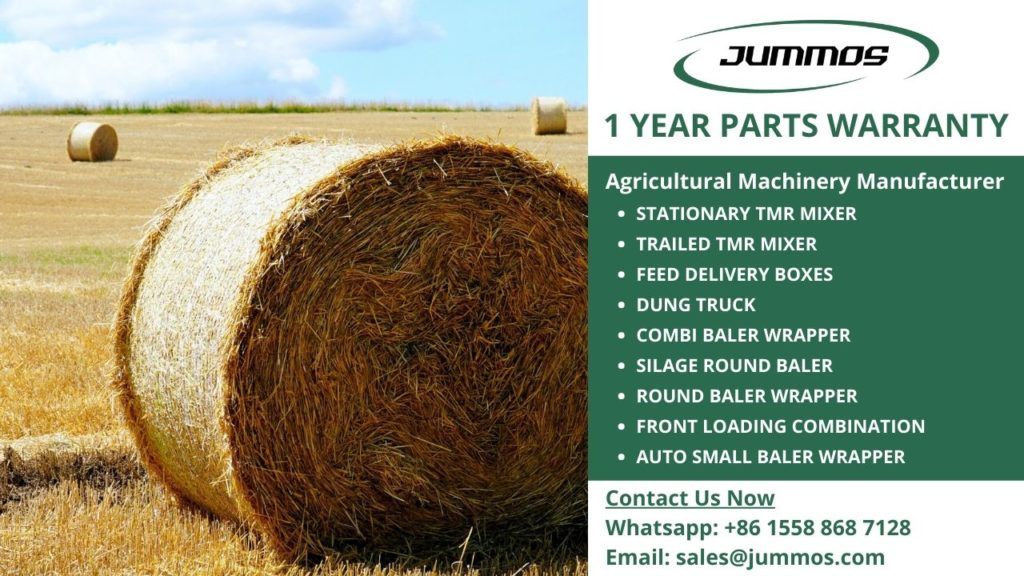
An introduction to what is a straw baler will be closely related to the manufacture of silage bales as a whole. This is a management of making feed for livestock with certain preservation methods so that you can have a reserve of feed in the lean season. You also don’t need to buy into the purchase of industrial-made feed, whose prices are increasingly soaring.
Contents
What is a Straw Baler?
This type of baler is used to tidy up the hay that is scattered on the farmland after harvest. Farmers will take rice and only take the grains to be processed into the rice. Most smallholders will let the straw rot and mix it with the soil when starting to plant rice again.
But the breeders will not let the straw become garbage just like that. The straw baler will be lowered, and the straw will be formed in solid rolls in the form of cylinders or squares. As soon as it is formed into bales, the straw will start the fermentation process to become fed a few months later. Bale straw should be wrapped neatly with a special plastic so that the fermentation process takes place optimally and as expected.
The hay baler is usually integrated with the tractor vehicle or specially formed to facilitate the movement of the machine in the bale. The use of a straw baler will make the bale-making process faster and with a larger capacity if you do it manually.
How Straw Baler Works
After getting a brief explanation of what a straw baler is, let’s complete the comprehensive information by finding out how this machine works. Straw balers available in the market are usually divided into two types first cylindrical straw balers and rectangular hay balers. You can choose one of these forms, depending on your taste and effectiveness, when you want to process it into silage.
How a Cylindrical Straw Baler Works
Cylindrical bale balers are preferred because they are more weather resistant when left to store in the open. This type of bale will be more protected from rainwater, and it can even be used as a sleeping mat. Here are some things you need to know about Bale Cylinders:
- The size of the bale is generally 4 to 5 feet, and this will affect the weight. Straw balers can also form bales with hardcore or softcore modes. The formation of a very tight bale has a dramatic effect on its weight. This will also affect how you wrap it for silage.
- Bale begins by collecting hay, then putting it into the baling room. The straw is covered with a rubber belt and continues to be compacted until it forms a round shape and fills the entire baler chamber. Monitoring in-cylinder bale formation is carried out through a hydraulic system in which the straw exerts pressure on the belt up to a certain tension limit.
Furthermore, the operator will stop when the voltage reaches the maximum specified limit. The cylindrical bale that has been formed will then be wrapped with baler thread while the pressure on the belt is opened. The straw that has been processed in the straw baler will be removed in the form of a cylinder and rolled to the ground.
How a Square Straw Baler Works
While cylindrical bales are more flexible, breeders prefer square bales because they are safer and easier to stack. Usually, this kind of bale already has a special storage area so that the bale can fill all rooms in the warehouse without gaps. Here are a few things you need to know about how this type of bale works:
- Bales with a square shape must be supported using transportation to move and stack the hay that has been formed into bales. Just like cylinder bales, they must be immediately wrapped in special plastic when they want to be used as silage.
- To form a square bale of hay, the straw is first collected from the ground and sorted so that no stones or debris enter the straw baler. There is a compression rod at the back of the pick-up to hold the straw for immediate transfer to the baling room. Next is the process of compression and cutting to form a bale of the desired size. The bales are then wrapped in baler wire, tied, then re-opened to the ground in a compacted and boxed form.
Where to Get the Best Straw Baler?
Jummos is one of the most recommended suppliers because it fulfills many ideal requirements as a supplier. Our company is experienced and has a good track record. Maximum service to clients is equivalent to the availability of various agricultural machines, including straw bales, which are of high quality. You can also find out more about “What Is a Straw Baler?” by contacting our team at any time.
